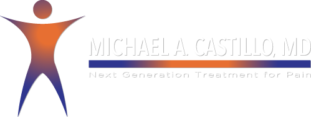
What is Spinal Cord Stimulation?
Spinal cord stimulation (SCS) is a proven therapy that has been recommended by doctors to manage chronic pain and improve quality of life. Spinal cord stimulation systems are approved or cleared by the U.S. Food and Drug Administration (FDA) for managing chronic pain. It can help manage chronic pain in the back, neck, arms, or legs. They are also covered by many major health insurance plans, Medicare, and workers’ compensation programs.
Benefits of neurostimulation may include
- A reduction in pain by 50 percent or greater.
- Reduction or elimination in the use of pain medications.
- Increased activity levels and an improved overall quality of life.
Spinal cord stimulation is not a cure for what is causing the pain and does not treat specific diseases. Instead, it is a therapy designed to mask pain by blocking pain signals before they reach the brain. It’s been used to manage pain that comes from failed back surgery syndrome, or post-laminectomy syndrome, and other neuropathies. To find out if spinal cord stimulation may be right for your pain, talk to your doctor.
Spinal Cord Stimulation: A Proven Therapy
Spinal cord stimulation is an option recommended by doctors to manage chronic pain and improve quality of life for over 40 years. SCS systems are approved or cleared by the U.S. Food and Drug Administration (FDA) for the management of chronic pain in the back, neck, arms, or legs. They are also covered by many major health insurance plans, Medicare, and workers’ compensation programs.
To determine if spinal cord stimulation is effective, several clinical studies have been conducted worldwide. Many of these studies analyze things such as reduction in pain and in medications. The following charts summarize some of the studies of neurostimulation and its effects on the quality of life of patients.
What Are the Components of a SCS System?
Spinal cord stimulation systems typically consists of three components. These components are designed to work together to help manage pain: a generator, leads, and a programmer.

Generator
A small device, similar to a pacemaker, that sends pulses to the leads. Generators contain either a rechargeable or nonrechargeable (primary cell) battery. They are usually placed in the abdomen or buttock area.

Programmer
An external, handheld device, similar to a remote control, that lets you adjust how the stimulation feels.

Leads
Thin wires that deliver the pulses from the generator to nerves along the spinal cord. Leads are placed in an area along the spinal column called the epidural space. Leads can be one of two types: percutaneous or paddle.
How Does Spinal Cord Stimulation Work?
Spinal cord stimulation works by intercepting pain signals before they reach the brain. To do this, a small system is implanted within the body. This system, similar to a cardiac pacemaker, is used to replace pain with a different feeling. Some people describe this feeling as a gentle massaging sensation or, in some cases, simply the absence of pain.
- Pain signals travel up the spinal cord to the brain.
- A generator sends pulses to a lead (a thin wire).
- Leads delivers these pulses to nerves along the spinal cord.
- Pulsations block the pain signals before they reach the brain.
- The painful feeling is replaced with a more pleasant sensation.
What is a Temporary SCS Trial?
SCS is one of the few procedures that allows you to try the therapy before committing to having the implant permanently. While we run a very high success rate for the correct patient, we still want to insure this therapy is going to work long term for you. During the trial period, we will place small medical wires in the epidural space which are connected into an external pulse generator. You can cycle through different sensations to discover which settings control your pain. The trial period will last anywhere from 5-15 days and can be extended longer if needed. At the end of the trial period you will decide whether or not your quality of life was improved enough to move forward with the permanent implant.
What are the types of stimulation systems
 Skip to content
Skip to content
